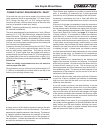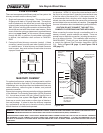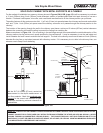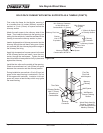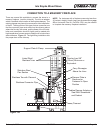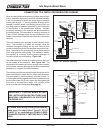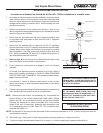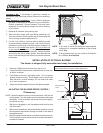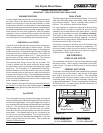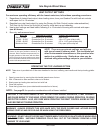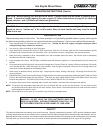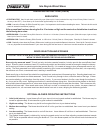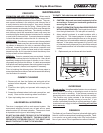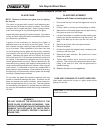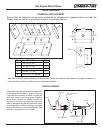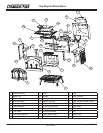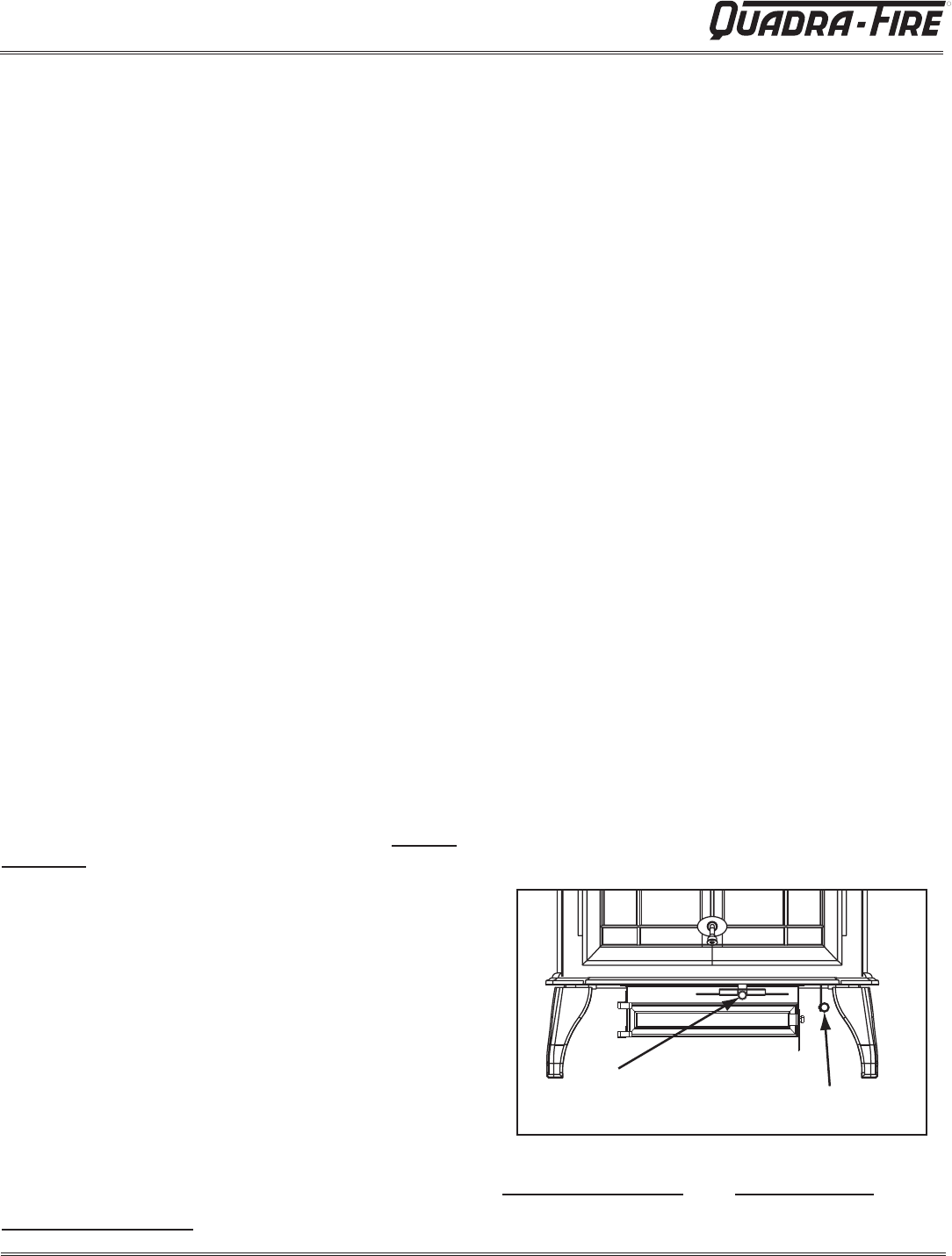
Page 17
Isle Royale Wood Stove
R
February 4, 2005
250-5763B
BURNING PROCESS
In recent years there has been an increasing concern about
air quality. Much of the blame for poor air quality has been
placed on the burning of wood for home heating. In order
to improve the situation, we at Quadra-Fire have developed
cleaner-burning wood stoves that surpass the requirements
for emissions established by our governing agencies. These
wood stoves, like any other appliances, must be properly
operated in order to insure that they perform the way they
are designed to perform. Improper operation can turn most
any wood stove into a smoldering environmental hazard.
KINDLING or 1st STAGE
It helps to know a little about the actual process of burning in
order to understand what goes on inside a stove. The first
stage of burning is called the kindling stage. In this stage, the
wood is heated to a temperature high enough to evaporate
the moisture which is present in all wood. The wood will
reach the boiling point of water (212°F / 100C) and will not
get any hotter until the water is evaporated. This process
takes heat from the coals and tends to cool the stove.
Fire requires three things to burn: fuel, air and heat. So,
if heat is robbed from the stove during the drying stage,
the new load of wood has reduced the chances for a good
clean burn. For this reason, it is always best to burn dry,
seasoned firewood. When the wood isn’t dry, you must open
the air controls and burn the stove at a high burn setting for
a longer time to start it burning. The heat generated from the
fire should be warming your home and establishing the flue
draft, not evaporating the moisture out of wet, unseasoned
wood, resulting in wasted heat.
The air control to the right of the stove is called the
Start-Up
Air Control; it is used during the kindling stage of burning.
It must be closed (pulled out) after the first 5 to 15 minutes.
Figure 20A.
2nd STAGE
The next stage of burning, the secondary stage, is the period
when the wood gives off flammable gases which burn above
the fuel with bright flames. During this stage of burning it is
very important that the flames be maintained and not allowed
to go out. This will ensure the cleanest possible fire. If you
are adjusting your stove for a low burn rate, you should
close down the air to the point where you can still maintain
some flame. If the flames tend to go out, the stove is set
too low for your burning conditions. The air control slide in
the center of the stove, beneath the ashcatcher, is the one
used to adjust the stove for burn rates. This is called the
Primary Air Slide Control.
FINAL STAGE
The final stage of burning is the charcoal stage. This occurs
when the flammable gases have been mostly burned and
only charcoal remains. This is a naturally clean portion of
the burn. The coals burn with hot blue flames.
It is very important to reload your stove while enough lively
hot coals remain in order to provide the amount of heat
needed to dry and rekindle the next load of wood. It is best
to open the air controls for a short while before reloading.
This livens up the coalbed. Open door slowly so that ash
or smoke does not exit stove through opening. You should
also break up any large chunks and distribute the coals so
that the new wood is laid on hot coals.
Air quality is important to all of us, and if we choose to use
wood to heat our homes we should do so responsibly. To
do this we need to learn to burn our stoves in the cleanest
way possible. Doing this will allow us to continue using our
wood stoves for many years to come.
OPERATING INSTRUCTIONS
IMPORTANT - PLEASE READ BEFORE USING STOVE
START-UP AIR SYSTEM
The combustion air enters at the rear of the firebox through
the rear air tubes. This air supply is controlled by the Start-
up Air Control. For more air push control in, for less air pull
control out.
PRIMARY AIR SYSTEM
The primary air enters below the ash catcher and is directed
to the upper front of the firebox, near the top of the glass
door and to the lower front of firebox. This preheated
air supplies the necessary fresh oxygen to mix with the
unburned gases, helping to create secondary, tertiary and
quaternary combustions. This air is regulated by the Primary
Air Slide Control. For more primary air slide control left, for
less air, slide control to the right.
Primary Slide Control
OPEN - SLIDE LEFT
CLOSE - SLIDE RIGHT
Start-Up Control
OPEN - PUSH IN
CLOSED - PULL OUT
Primary Air
Slide Control
Start-Up Air
Control
AIR CONTROLS
Figure 17A



